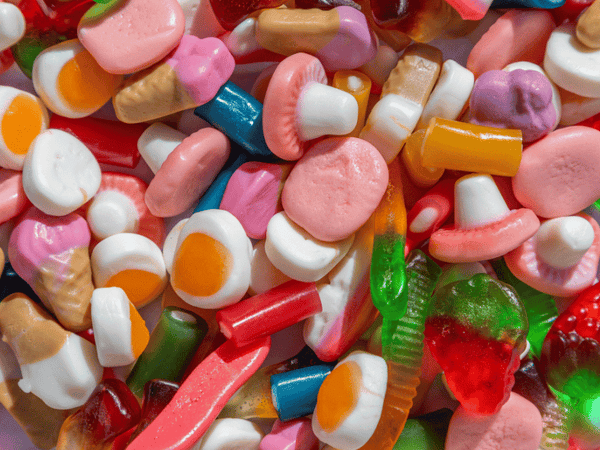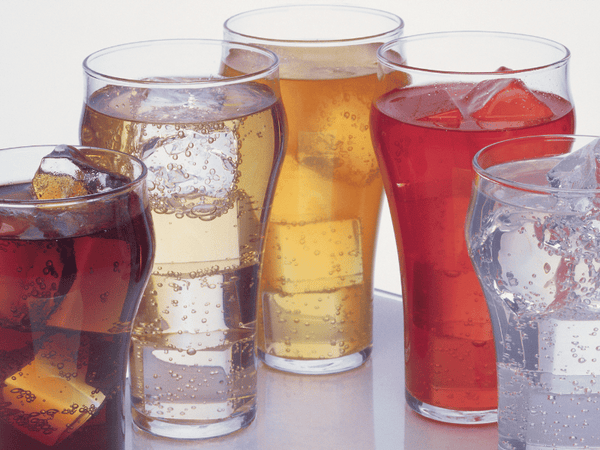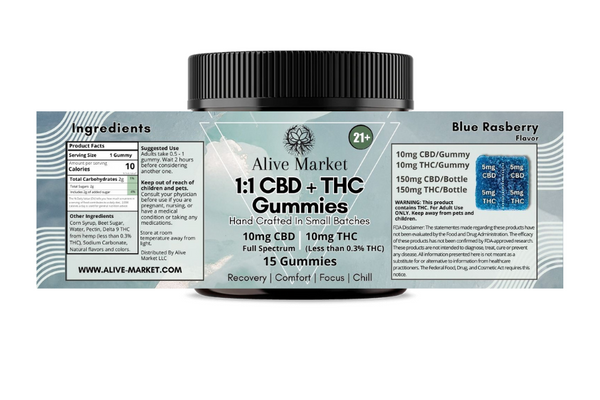In the ever-evolving world of cannabis consumers, consuming edibles has emerged as a favored choice for many, offering a discreet and varied option for enjoying the myriad benefits of cannabis. From gummies and chocolates to baked goods and beverages, THC edibles have revolutionized the way cannabis consumers perceive and consume cannabis.
However, one common question that both newcomers and seasoned users of other methods of edible high alike often ponder is, "How long edibles last?" This inquiry isn't just about the duration of the effects of edible high once consumed, but also the shelf life of these cannabis-infused food products. The longevity of cannabis and other THC edibles can be influenced by a range of factors, including their ingredients, packaging, and storage conditions.
In this blog, we'll delve into the intricacies of cannabis edibles' shelf life, offering insights into how they work in the body, how long you can expect edible last before consumption, and best practices for storage to ensure you're getting the most out of your cannabis edibles. Whether you're curious to consume cannabis edible for the first time or a seasoned cannabis edible aficionado, understanding these nuances can greatly enhance your cannabis edible dosage experience, ensuring safety, potency, and optimal enjoyment.
Understanding Edibles

What Are Edibles?
Edibles are food products infused with cannabis extracts. Not all edibles are created equal. They come in an array of edible forms, including but not limited to gummies, chocolates, hard candy, hard candies, baked goods like cookies and brownies, and even beverages. Other edibles often have a longer onset time than gummies due to their absorption through the digestive system. You may be surprised to find this: hundreds of food and drink items are infused with cannabis and tasty THC edibles.
Each type of edible offers a very high dose and unique experience, both in terms of flavor and the onset and duration of desired effects. Unlike other methods of vaping or smoking cannabis, which deliver immediate results in very high doses, edibles deliver cannabinoids to the body through the digestive system, resulting in a more delayed effect and the onset of desired effects that can edible last much longer. Slow absorption through the digestive system also means the drug and its effects can linger for up to ten hours. They can even last longer than that, especially if you're a new user taking a higher dose. For most users, the effects peak between two and four hours after consuming THC edibles.
Blood and oral fluid cannabinoid pharmacokinetics and evaluation of oral fluid screening devices for predicting delta-9-tetrahydrocannabinol in blood and oral fluid following cannabis brownie administration.
How Edibles Work in the Body
When you consume cannabis, for example, a THC edible after smoking or vaping cannabis, it doesn't immediately enter your bloodstream. Instead, it travels through your digestive system, where the tasty THC (tetrahydrocannabinol) is absorbed into the bloodstream through the stomach and intestines. This process of blood testing can take anywhere from 30 minutes to 2 hours and varies depending on factors like metabolism, weight, body composition, and the last time you ate. If you're a lightweight, meaning that you do not partake of THC very often, you'll likely feel the effects more than someone who is a heavier THC user. And if you have a fast metabolism, the THC will leave your system faster than someone with a slower metabolism.
Once absorbed, THC edibles are metabolized by the liver into 11-hydroxy-THC, a potent compound that crosses the blood-brain barrier more effectively than THC inhaled through smoking cannabis itself. This results in higher tolerance to cannabis, less tolerance to marijuana addiction, lower tolerance, increased appetite, and a more intense and longer-lasting effect of marijuana addiction.
Alive Market 1:1 CBD+THC Gummies
Alive Market 1:1 CBD+THC Gummies represent a harmonious blend of two of nature's most renowned cannabinoids, offering a balanced experience that caters to both the body and mind. These gummies are meticulously crafted to ensure each piece contains an equal ratio of CBD to THC, providing a synergistic effect that many users find enhances the therapeutic benefits of each compound.
Ideal for those seeking relief from stress, chronic pain, or insomnia, these gummies offer a discrete and convenient way to manage various conditions. With their natural ingredients and precise cannabinoid ratios, Alive Market's 1:1 gummies stand out as a holistic wellness product, aiming to support a balanced lifestyle and promote overall well-being.
Alive Market CBD Daily Gummies
Alive Market CBD Daily Gummies are designed for those seeking to incorporate the wellness benefits of CBD into their daily routine conveniently and enjoyably. Crafted with care from high-quality, organically grown hemp, these gummies provide a low-dose, consistent edible dosage of CBD, making it easy to maintain a steady intake throughout a few hours of the day.
Perfect for individuals looking to support stress reduction, enhance mood, or improve sleep quality, these gummies offer a non-psychoactive solution to various wellness goals. With their delicious flavors and natural ingredients, Alive Market's CBD Daily Gummies are a delightful way to pursue balance and well-being, ensuring that each day starts with a positive step towards a healthier lifestyle.
Edibles Shelf Life
How long edibles last? Do they have an expiration date? Understanding the shelf life of various forms of cannabis edibles is crucial for consumers, not only to ensure the safety and quality of the products they consume but also to maintain the desired therapeutic and psychoactive effects. The longevity and efficacy of edibles are influenced by a myriad of factors, including their ingredients, manufacturing processes, packaging, and how they are stored by the consumer.
Factors Influencing Shelf Life
Ingredients
The primary determinant of an edible's shelf life is its ingredients. Edibles made with perishable items, like dairy or fresh fruit, have a shorter shelf life than those made with non-perishable items, such as hard candies or chocolate. The presence of preservatives can also extend shelf life.
Packaging
Proper packaging is essential to protect edibles from exposure to air, moisture, and light, all of which can accelerate degradation. Vacuum-sealed and air-tight packaging can significantly extend an edible's shelf life by minimizing exposure to these elements.
Storage Conditions
Temperature, humidity, and light exposure play significant roles in the longevity of edibles. High temperatures and humidity can promote mold growth and spoilage, while light can degrade THC and other cannabinoids, reducing their potency over time. For instance, if your edible has developed mold, it will typically display spots of white, green, or black. Discoloration or a change in texture can also indicate that the food has spoiled. Gummies may become overly hard or grainy, while baked goods may become excessively dry or crumbly.
Average Shelf Life
Gummies and Candies

These edibles, like hard candy, tend to have a longer shelf life due to their sugar content and lack of perishable ingredients. When stored properly, gummies and candies edibles last for up to a year without significant loss of potency.
Baked Goods

Cookies, brownies, and other baked goods have a shorter shelf life due to their dairy and flour content. Typically, baked goods edible last for about a week at room temperature, up to two weeks when refrigerated, and several months if frozen. Edibles like baked goods that travel to the stomach before being broken down by the liver take longer, as it takes more time for your body to process them.
Chocolate

Cannabis infused chocolates can last up to a year if stored in a cool, dark place. Like gummies and candies, chocolate's sugar and fat content help preserve the product, but temperature fluctuations can cause it to melt or bloom, affecting texture and consistency.
Beverages

Cannabis-infused beverages like coffee, tea and iced tea, soda, energy drinks and shots, beer, wine, and alcohol should be treated like any other perishable drink. Once opened, they should be consumed within a few days. Unopened, their shelf life depends on the type of beverage and packaging, but generally ranges from a few months to a year.
Storing Edibles
To ensure that cannabis edibles retain their freshness, potency, and flavor over an extended period, implementing proper storage techniques is crucial. The longevity of edibles and the preservation of their cannabinoids, such as THC and CBD, are significantly influenced by how they are stored. Factors like exposure to air, light, and temperature can accelerate the degradation process, leading to diminished quality and effectiveness.
Airtight Containers
The importance of using airtight containers cannot be overstated when it comes to preserving marijuana edibles. Exposure to air not only accelerates the oxidation of cannabinoids, leading to a reduction in potency, but also introduces moisture that can result in mold growth. By storing marijuana edibles only in vacuum-sealed bags, airtight jars, or containers specifically designed for cannabis storage, you can significantly minimize air exposure, preserving the freshness and efficacy of the products.
Cool and Dark Storage
Cannabinoids and terpenes, the compounds responsible for the aroma, flavor, and effects of cannabis, are sensitive to light and heat. UV light can degrade these compounds, while excessive heat can alter the chemical structure of cannabinoids, reducing the potency of your edibles. Storing your cannabis products in a cool, dark place, such as a pantry or cupboard away from direct sunlight and heat sources, can help maintain their integrity over time.
Refrigeration and Freezing
For edibles containing perishable ingredients or those susceptible to melting, refrigeration or freezing may be appropriate. Refrigeration can help extend the shelf life of edibles like baked goods and certain chocolates by slowing down the degradation process and preventing the growth of mold and bacteria. Freezing is particularly effective for long-term storage, though it's important to wrap edibles properly to prevent freezer burn and to thaw them correctly to preserve their quality. However, note that freezing can affect the texture of some edibles, so it may not be suitable for all types.
Humidity Control
Managing humidity levels is crucial to preventing mold and bacterial growth. Edibles should be stored in an environment with low humidity to avoid moisture buildup, which can spoil the product. Silica gel packets or other desiccant materials can be used within storage containers to absorb excess moisture, keeping your edibles dry and safe.
Labeling and Organization
Keeping edibles well organized and labeled with the date of purchase or manufacture can help you track their freshness and ensure they are consumed within their optimal shelf life. This practice is especially helpful when storing multiple types of edibles or when freezing products for extended periods. Marijuana edibles should be stored separately from other food items in your home. This will help avoid accidental consumption by children or pets and ensure your marijuana edibles remain safe.
Storage Best Practices
Temperature
Store edibles in a cool, consistent environment. Extreme temperatures, both hot and cold, can negatively affect the quality and potency of edibles. A pantry or cupboard away from appliances that produce heat is often ideal for storage. For edibles prone to melting, such as chocolates, a refrigerator or wine cooler can provide a stable, cool environment.
Humidity
High humidity can promote the growth of mold and bacteria, especially on edibles like baked goods. Maintaining a low-humidity environment is crucial. Using desiccant packets in storage containers can help absorb excess moisture, keeping your edibles dry and safe.
Light Exposure
Light, particularly UV light, can degrade THC and other cannabinoids, reducing the potency of your edibles. Storing edibles in opaque, airtight containers can protect them from light exposure. For products in clear packaging, placing them in a drawer or cabinet can offer an extra layer of protection.
Extending Shelf Life Tips
Airtight Containers
Oxygen can degrade THC over time and contribute to the staining of edibles. Using airtight containers for storage can significantly slow this process. Vacuum-sealed bags, mason jars with tight-sealing lids, and specially designed-cannabis storage containers are all excellent options.
Refrigeration
For edibles that contain perishable ingredients or are prone to melting, refrigeration can extend their shelf life. Ensure the refrigerator is set to a consistent temperature and store edibles in airtight containers to prevent them from absorbing odors.
Freezing for Long-Term Storage
Freezing is an option for extending the shelf life of many edibles, particularly baked goods. Wrap items tightly in plastic wrap or aluminum foil and place them in airtight containers or freezer bags to prevent freezer burn and odor absorption. Thaw frozen edibles in the refrigerator or at room temperature before consuming to ensure the best taste and texture.
Potency Over Time
A common concern among edible consumers is whether the potency of their products for increased appetite decreases over time. Understanding how and why potency changes can help you make informed decisions about storing and consuming edibles for optimal effects.
Does Potency Decrease?
THC Degradation: Over time, THC, the primary psychoactive component in cannabis, can degrade into CBN (cannabinol), a cannabinoid with different effects, usually less psychoactive. This degradation process is influenced by exposure to air (oxidation), light, and heat. Proper storage can slow down the degradation, preserving the THC content and, consequently, the potency of the edibles.
CBD and Other Cannabinoids: Like THC, CBD and other cannabinoids can also degrade over time, although the effects of this degradation on the overall experience are less understood. The same factors that affect THC stability—light, air, and heat—also apply to CBD and other cannabinoids.
Potency Loss Signs
Changes in Texture, Smell, or Color
One of the first signs that your cannabis edibles may have lost potency is a change in texture, smell, or color. If you notice any mold growth or an unpleasant odor, it is best to discard the edibles.
Lowered Effectiveness
If you find yourself needing larger doses of your cannabis edibles to achieve the desired effect, this could be a sign of potency loss. This could be due to THC degradation or a decrease in other cannabinoids.
Stale Taste
Just like food can go stale over time, edibles can also develop a stale taste. This could indicate that the ingredients have started to break down and lose their potency.
Loss of Label Claims
Edible products often come with labels specifying their cannabinoid content and edible dosage recommendations.
Recommended Consumption
For optimal desired effects, it's generally recommended to consume edibles within a few hours to a very few hours or months of their shelf life, as outlined by the manufacturer.
Edible Drug Test
If you think edibles are a common product that is oral and therefore not detectable on drugs, then you should say "no." Edibles are easily detected by several kinds of urine tests and other methods of drug testing. Thus, edible THC is expected in drug testing. Several different drugs are used for testing edible items. Typically, the results of drug tests are measured using urine and saliva. Tell me the timeframe for these drugs to get into edible food. Tests to identify foods.
What Effects Do Edibles Have?
Edible products are similar to other marijuana products, but some people experience them differently. When someone smokes marijuana, the THC can reach the body through the bloodstream immediately. When eatables are consumed, they are digested into the human brain, so the effect of eating them isn't noticed immediately.
Depending on the person's body weight, body composition, and food consumption, it sometimes takes between half and two hours to get an effect, depending on the edibles used. Some say the effects of edibles after smoking can be a tad "heavier.". It is a lot cheaper if you take too many edibles.
Safety Considerations
Ensuring the safety of edibles is paramount for edible consumers. Beyond maintaining potency and flavor and how long edibles last, recognizing when an edible may no longer be safe to consume is crucial for edible consumers.
Identifying Spoiled Edibles
Signs of Spoilage: Just like any other food product, edibles can spoil. Signs of spoilage include mold growth, a bad smell, or an unexpected color change. Edibles that contain ingredients prone to spoilage, such as dairy or fresh fruit, should be consumed before the expiration date to avoid any health risks.
Health Risks: Consuming spoiled edibles can lead to foodborne illness. Symptoms can range from mild discomfort, such as nausea and stomach cramps, to more severe conditions, depending on the contaminants. If you suspect your edible has spoiled, it's safer to discard it than to risk illness.
Legal and Health Considerations
Following Local Regulations: Cannabis laws vary significantly by jurisdiction, affecting not only the legality of possession and consumption but also the labeling, packaging, and sale of edibles. Ensure you are familiar with and follow your local cannabis regulations, including those related to the storage and labeling of THC products, to stay compliant.
Recommendations for Safe Consumption: Start with a low dose, especially if you are new to edibles or trying a new product. Because edibles are metabolized differently than inhaled cannabis, their desired effects can be more intense and longer-lasting. Edibles with low dose is likely to produce mild psychoactive effects and are recommended for beginners, microdoses, and occasional consumers. The lowest effective dose can be taken if you are consuming edibles for the first time. The average dose from an edible can last 6 or more hours, with the strongest effects occurring about 3 hours later. A very high dose is considered to be 20 mg or greater. Higher doses of edibles tend to last longer because it takes your body time to metabolize them and remove them from your system.
Conclusion
Understanding the shelf life, proper storage, and practical considerations of cannabis addiction and other edibles are essential aspects of responsible cannabis product use. By recognizing the factors that influence the longevity and potency of edibles, employing best practices for storage, and staying informed about safety and legal guidelines for cannabis products, consumers can enhance their experience infused with cannabis edibles along with other cannabis products and edibles.
Whether you're a seasoned cannabis enthusiast or are new to the world of using cannabis products and edibles, respecting these principles ensures your THC products and edibles remain safe, potent, and enjoyable for as long as possible.




